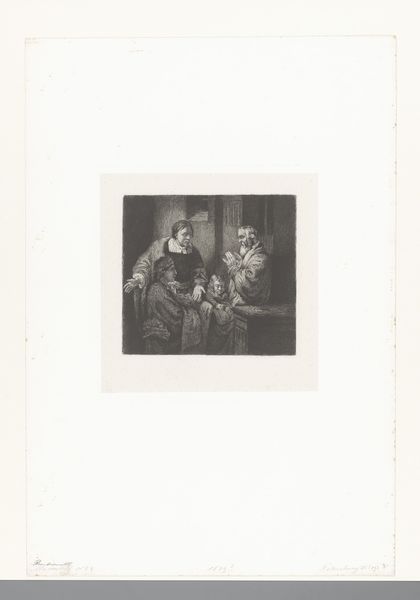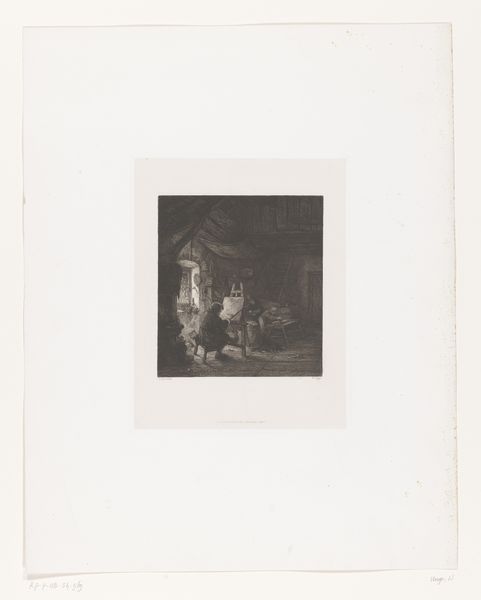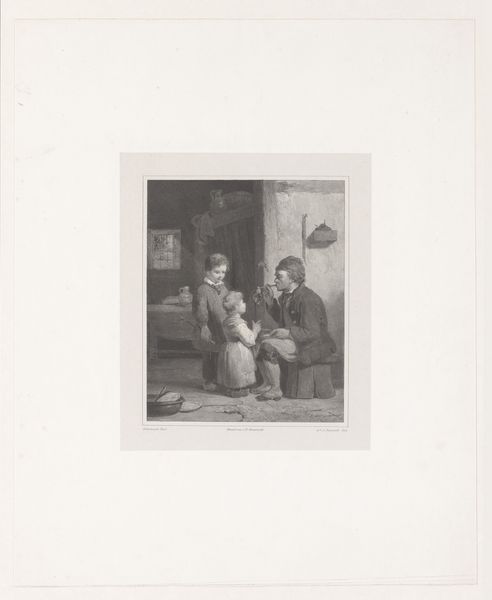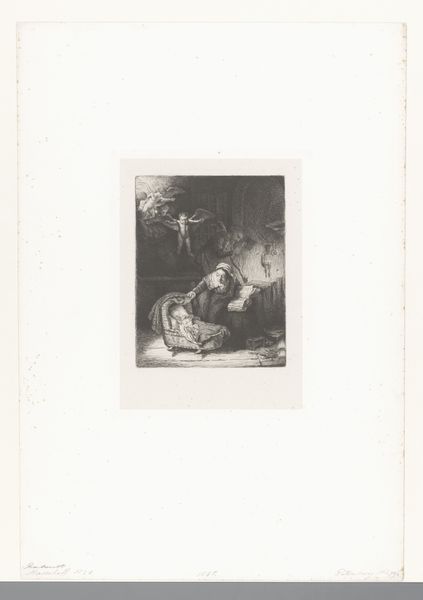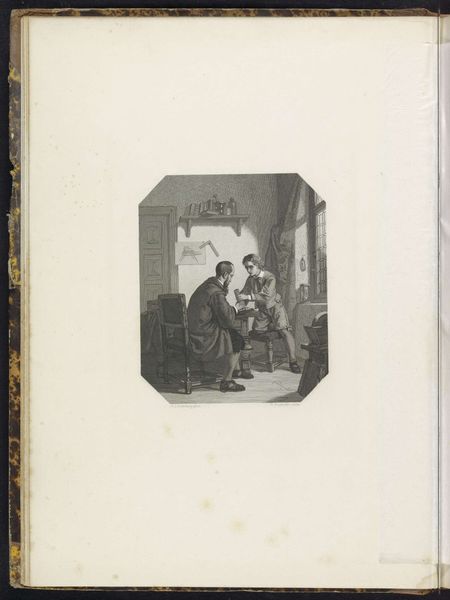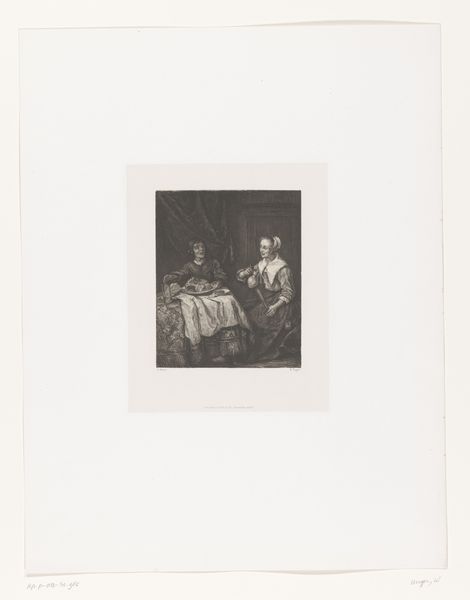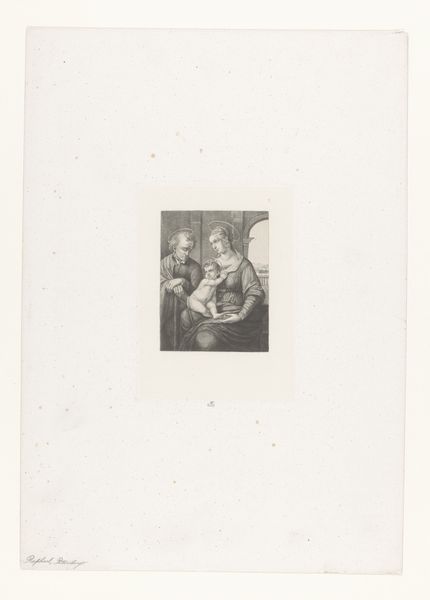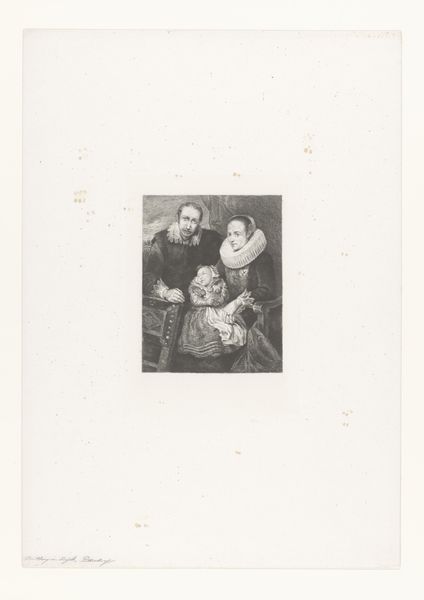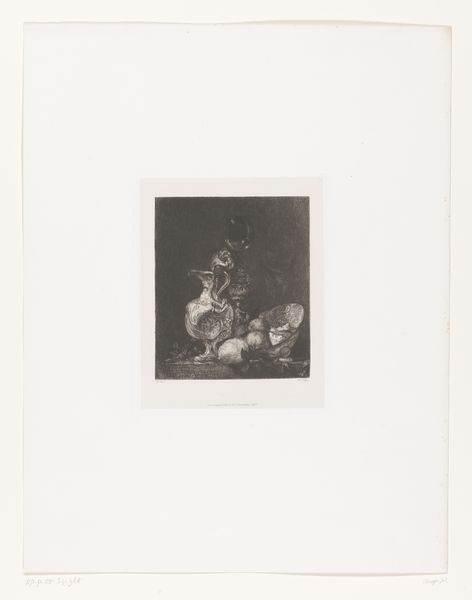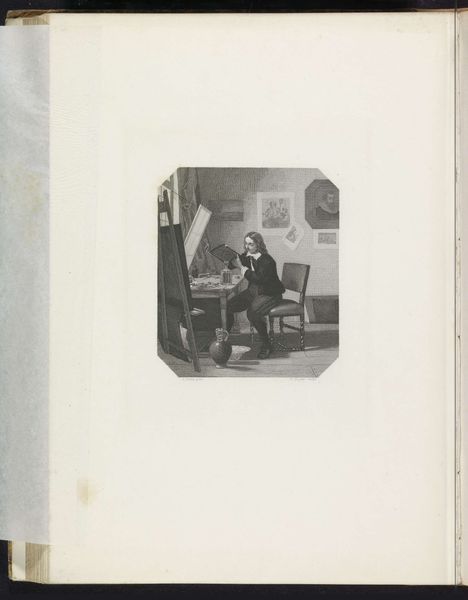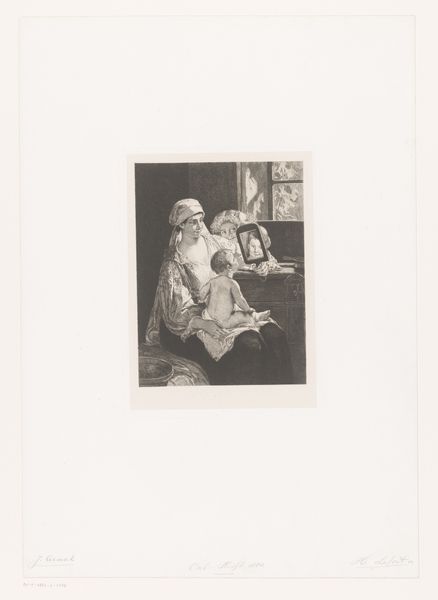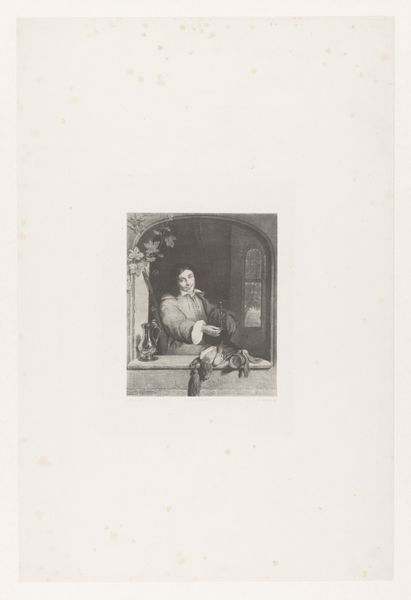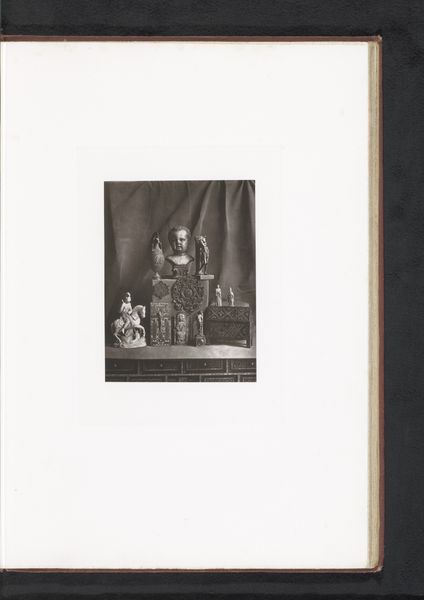
etching
#
portrait
#
etching
#
vanitas
#
romanticism
#
history-painting
Dimensions: height 430 mm, width 300 mm
Copyright: Rijks Museum: Open Domain
Carel Frederik Curtenius Bentinck made this artwork, Karel V met schedel, an engraving, in the nineteenth century. Dominating the scene is the skull, the supreme symbol of mortality, held by Charles V, who contemplates it with an air of melancholic resignation. This memento mori, a reminder of our inescapable end, echoes through art history. We see it in ancient Roman art, where skulls symbolized triumph over death, and again in the Renaissance vanitas paintings, laden with symbols of transient life. Think of Judith holding the head of Holofernes. Here, the skull is not a symbol of victory but rather a contemplation of life's ephemerality, and it serves as a reminder of the fleeting nature of earthly power. Consider the emotional weight of this recurring motif. Does it evoke fear, acceptance, or perhaps a quiet understanding of our place in the cosmos? This image taps into a deep, subconscious awareness of death. It’s a part of our collective memory. The skull is an emblem of death but also of life’s continuous cycle, recurring throughout the ages.
Comments
No comments
Be the first to comment and join the conversation on the ultimate creative platform.
